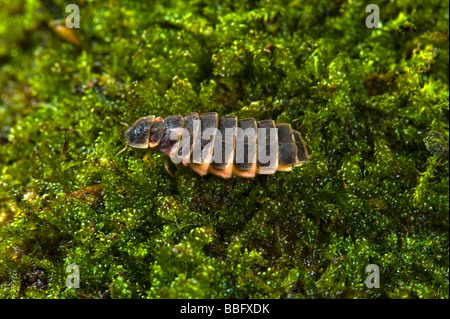
In this study we monitored individual females daily in artificially lit and unlit surroundings, covering an entire mating season, to test whether streetlighting (low pressure sodium (LPS) monochromatic orange) reduces female mate-attraction success.

However, no studies have documented the actual mating success of females in relation to ALAN. More recently, Elgert, Hopkins, Kaitala, and Candolin studied female response to artificial light in a laboratory set-up and found that females did not move away from the light, but were less likely to glow and hid away more. Gardiner and Didham found the opposite pattern with increasing numbers of glowing females away from ALAN but were not able to discriminate between actual female abundance and glowing activity. Moreover, given the short mating period it is likely that many of these females would die without having mated. Because females cease to glow once mated, it was suggested that high numbers of glowing females actually indicated lack of mating success. Ineichen and Rüttimann furthermore observed high numbers of females displaying in illuminated areas. Dreisig also found that incandescent and fluorescent lamps reduced the circadian glowing activity in females. They found that different kinds of artificial lights induced a lower capture rate of males in female-mimicking traps even at strikingly low light intensities. studied the effects of light intensity on mate seeking behaviour of males. Ineichen and Rüttimann, Bird and Parker, Stewart et al. noctiluca only the flightless females emit a continuous bioluminescent signal for the flying males. Studies on the effects of ALAN on adult common glow-worms ( Lampyris noctiluca L.) are scanter compared to their flashing North American and Asian counterparts.

Several studies on firefly species with flashing displays have found negative effects on courtship behaviour (among others: ). A recent global survey indicated ALAN as the second most important threat to glow-worm and firefly populations worldwide, after habitat loss and fragmentation, with significant negative impacts on reproductive success and population trends. Ī particular group of nocturnal animals that are especially vulnerable to artificial light are the bioluminescent glow-worms and fireflies (Lampyridae), due to their light based signals for mating. Even in protected areas, which can successfully act as a buffer to expanding urbanisation and deforestation, the effects of light pollution are tangible.

Eventually ALAN may affect entire ecosystems. ALAN mostly affects nocturnal species, however, diurnal species and even plants can also be affected. Artificial light at night (ALAN) is a globally occurring threat to wildlife, which has emerged relatively recently with the expansion of human industrialisation and is currently still increasing worldwide by 6% every year.


 0 kommentar(er)
0 kommentar(er)
